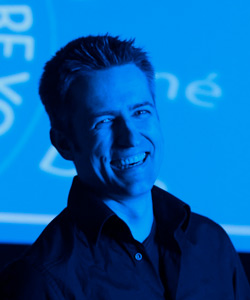Invited Speakers
Patrick Baudisch

Patrick Baudisch is a professor in Computer Science at Hasso Plattner Institute at Potsdam University. His research focuses on natural user interfaces and interactive devices, including miniature mobile devices, touch input, interactive floors and rooms, and most recently interactive fabrication. Previously, he worked as a research scientist in the Adaptive Systems and Interaction Research Group at Microsoft Research and at Xerox PARC. He holds a PhD in Computer Science from Darmstadt University of Technology, Germany. He was inducted into the CHI Academy in 2013 and has been an ACM distinguished scientist since 2014.
Talk title: Personal Fabrication in HCI: Trends and Challenges
Nadia Bianchi Berthouze

Nadia Bianchi Berthouze is a Professor in Affective Computing and Interaction at the Interaction Centre of the University College London (UCL). She holds a PhD in Computer Science from the University of the Studies of Milan (Italy). Her research focuses on designing technology that can sense the affective state of its users and use that information to tailor the interaction process. She investigates body movement and touch behaviour as means to recognize and measure the quality of the experience and studies how full-body technology and body sensory feedback can be used to modulate people’s perception of themselves and of their capabilities. She is currently researching these questions in the context (among others) of developing technology for physical rehabilitation and has suggested to put emotional factors at the centre of its design.
Talk title: The affective body argument in technology design
Daniel M. Russell

Daniel M. Russell is a Google Research Scientist. The central organizing theme of his research career is in understanding the nature of how people use large & complex collections of information in useful ways, and in creating an attractive, comprehensible, and evocative user experience of that information. Following this lead, he works to invent new mechanisms that let the people know more, perceive more richly, and comprehend the world in new ways. Specific research topics over the past several years have included: the design of information experience; sensemaking; intelligent agents; knowledge-based assistance; information visualization; multimedia documents; advanced design and development environments; design rationale; planning; intelligent tutoring; hypermedia; human/computer interfaces. He is best known for his work on cost structure of sensemaking which describes the tradeoffs one makes in discovering, organizing, and using information during a complex task.